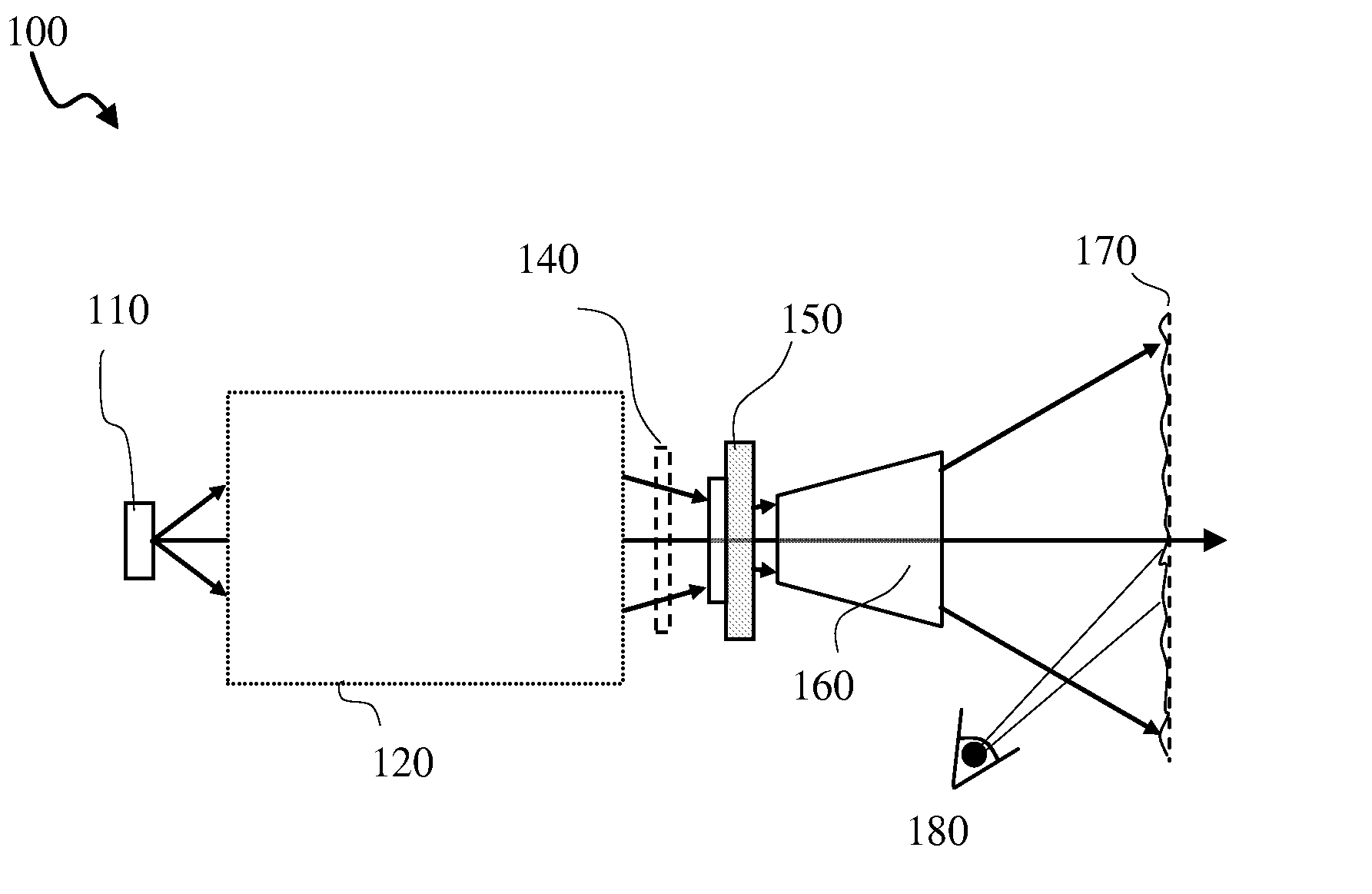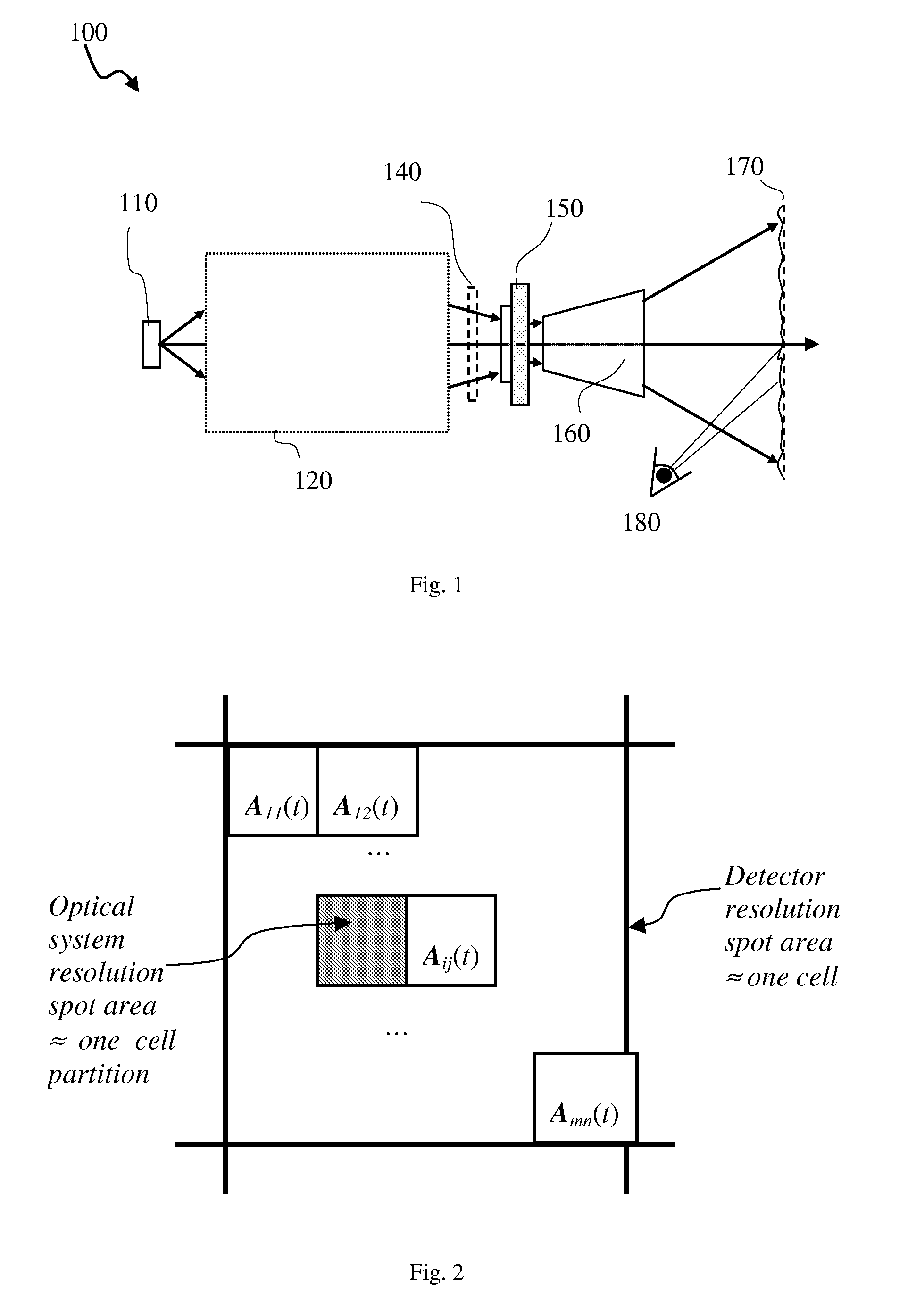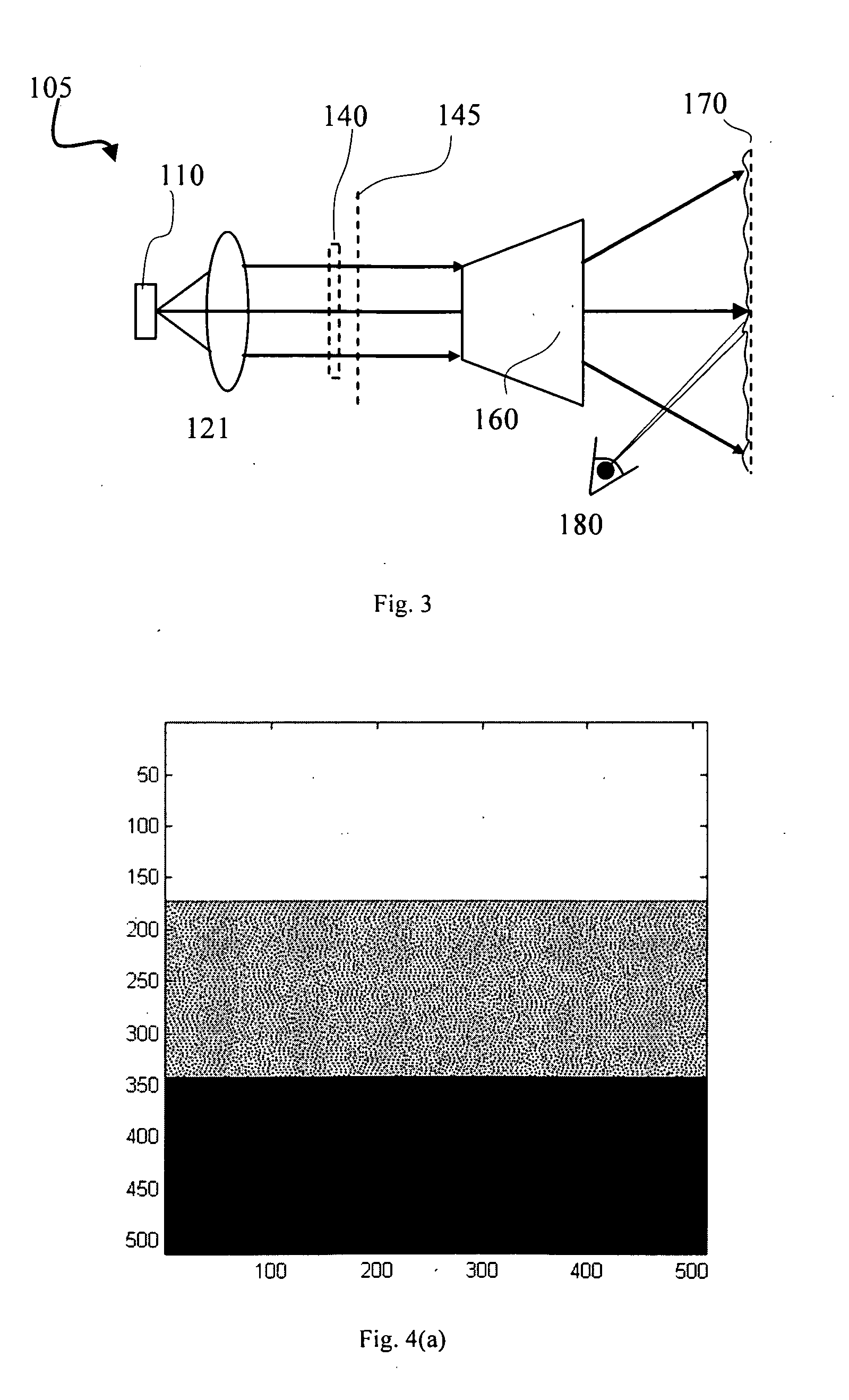[0009]The instant invention relates to a method of creating many varied boiling speckle patterns using an actuatable
waveplate element. In one embodiment, the boiling speckle patterns are presented to a detector (e.g.,
human eye,
photodetector) at the
image plane over time, along with the static / variable speckle patterns resulting from index inhomogeneity of optical elements and / or
projection screen roughness. These uncorrelated or partially correlated speckle patterns are incoherently summed over the detector integration interval (e.g., are temporally averaged). This temporally averaged
speckle pattern reduces the
speckle contrast by reducing the deviation of any observation pixel from the required image intensity in the absence of speckle.
[0011]According to one embodiment, the actuatable
waveplate element is a
waveplate assembly including two or more stages. In the first-stage, a single-layer quarter-waveplate (QWP) or a multiple-layer achromatic (A) QWP is oriented such that it's optic axis (also slow-axis, SA) is aligned at ±π / 4 (45 degrees) azimuthal angle offset to the polarized light output from the
laser source. As a result, the
linearly polarized light output from the laser is converted from a first
linear polarization to a first handedness of
circular polarization. In the second stage, a near half-waveplate (HWP) element converts the first
circular polarization (i.e., having the first handedness) to a second
circular polarization (i.e., having a second opposite handedness). The near HWP has a varied slow axis distribution (e.g., the slow axis orientation varies across the plane of the optical retarder in a predetermined or
random pattern). In a third optional stage, a second QWP or AQWP converts the second circular polarization to a second
linear polarization. If the retarder axes of the first stage and the third stage QWPs are aligned parallel, the second
linear polarization is parallel to the first linear polarization. If however, the two QWP stages are aligned with crossed axes, the first and the second linear polarizations are orthogonal. If the third stage QWP is omitted, circular polarization is output and passed to the appropriate
optical modulator (e.g., having a plurality of micromirrors). Notably, this polarization transformation forms a
closed loop locus on the
Poincare Sphere to induce a
geometric phase shift dependent on the optic axis orientation of the second stage near HWP. Since the near HWP includes a varied optic axis distribution, this waveplate
assembly functions as a despeckle device, which imposes a spatially and / or temporally varied
phase mask upon the coherent laser beam, thus reducing the perceived speckle, while still maintaining a high degree of input power in the required output polarization state.
[0012]In accordance with one aspect of the instant invention there is provided a method of reducing speckle in a
laser illumination system comprising: inserting a despeckle device in a beam of light, the beam of light including light emitted from a coherent laser in the
laser illumination system, the despeckle device including an optical retarder for providing an odd integer multiple of substantially half-wave retardation for the light emitted from the coherent laser, the optical retarder having a substantially constant retardance and a spatially varied slow axis, the spatially varied slow axis for imposing a
phase mask on the beam of light, the phase
mask for providing sub-resolution optical
phase modulation to a resolution spot on a detector; and actuating the optical retarder such that the sub-resolution optical phase modulation is varied within an integration time of the detector and such that an intensity non-uniformity of one detected resolution spot to another is reduced.
[0013]In accordance with another aspect of the instant invention there is provided an apparatus for reducing speckle in a laser illumination system comprising: a despeckle device including an optical retarder for providing an odd integer multiple of substantially half-wave retardation for light emitted from a coherent laser in the laser illumination system, the optical retarder having a substantially constant retardance and a spatially varied slow axis, the spatially varied slow axis for imposing a phase
mask on a beam of light, the beam of light including the light emitted from the coherent laser, the phase
mask for providing sub-resolution optical phase modulation to a resolution spot on a detector; and an
actuator for actuating the optical retarder such that the sub-resolution optical phase modulation is varied within an integration time of the detector and such that an intensity non-uniformity of one detected resolution spot to another is reduced.
 Login to View More
Login to View More  Login to View More
Login to View More 


